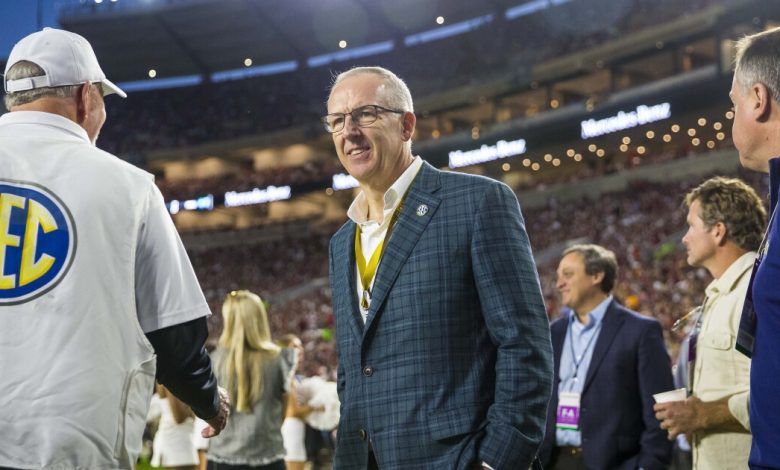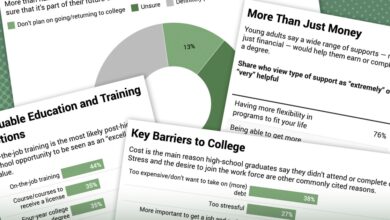The NCAA Has a New Constitution. What Will That Mean for Big-Time College Sports? No One Knows

[ad_1]
In the wake of a major legal defeat, the members of the National Collegiate Athletics Association on Thursday approved a revision of its constitution that seeks to empower each of the group’s three divisions, freeing the largest and wealthiest programs to enact measures that are better suited to their needs. The changes include a new call to support student health and safety, and could result in redefining the divisions’ memberships. The vote on the new constitution was held during the NCAA’s annual convention, near its headquarters here in Indianapolis.
What all that will mean in a few months, when the new structures are supposed to be in place, is largely unknown, except that the centralized authority of the NCAA will be constrained to a few areas concerning the management of the association, which has more than 1,000 member colleges.
The new constitution was proposed just a month after the U.S. Supreme Court ruled that the association’s rules, barring colleges from providing extra academic benefits beyond the usual scholarship, violated federal antitrust laws. The NCAA had argued that it should be exempt from those laws in order to preserve its definition of amateurism for college athletes. Among the broader changes, the new constitution says that athletes “may receive educational and other benefits in accordance with guidelines established by their NCAA division.”
The new constitution also comes as the NCAA faces something of a reckoning over the disparity between the highly commercialized nature of some major programs and the unpaid athletes who generate the revenues — mostly young, Black men who play football and basketball. Several football coaches at the premier programs now earn salaries comparable to those of coaches at the professional level.
Speaking to the convention before the new constitution was debated, Mark Emmert, president of the NCAA, said that the way money is being spent is one of the issues that has frustrated those both outside and inside the association.
If the association’s members aren’t able to govern college sports appropriately, courts, state lawmakers, and even members of Congress will take control of the enterprise, Emmert said. Numerous states have already done so, by enacting new laws that allow college athletes to profit from the use of their names, images, and likenesses. Those laws forced the NCAA to finally change its rule barring that practice in June.
A New Structure
The constitutional changes may be the most significant reshaping of the organization since 1973, when it created three levels of membership — Divisions I, II and III, which vary broadly by the number of sports they offer and whether they provide scholarships specifically for athletics.
That structure has grown unwieldy and doesn’t allow for flexibility to meet the differing needs of each division, said Carlos Vargas, president of Southeast Missouri State University and a member of the NCAA’s Division I Presidential Forum, a group of campus leaders that advises the association’s Board of Directors.
The most substantial changes are expected to happen among the roughly 350 institutions that make up Division I, the largest institutions in the association, typically with the biggest and most lucrative athletics programs. That group includes the 65 universities in the Power 5 — the five most prestigious athletic conferences.
Next month, a committee led by Julie Cromer, director of athletics at Ohio University, and Greg Sankey, commissioner of the Southeastern Conference, will meet to begin discussing the new structure for Division I.
The items for discussion are broad and meant to be transformative, said Cromer, including the division’s governance structure, how rules will be enforced, and enhanced support for athletes.
For example, on the issue of enforcement, Sankey said, the committee could consider an approach that prioritizes a timely process for investigating a possible violation rather than focusing on heavy penalties. The association has focused on strengthening penalties, Sankey said, but that sometimes takes several years.
The new constitution, though, has sparked concern that the Division I members, and in particular those in the Power 5, will continue to profit from their athletics programs without sharing the increasing revenues with the rest of the association.
During the debate over the new document, members representing Division II and III institutions said they felt shortchanged by the proposal, especially the sharing of money that comes from the NCAA’s March Madness. About $600 million is shared with the member colleges, and used to pay for other NCAA championship events.
But colleges at the Division II and III levels get only small shares of that money, even though they constitute the majority of members and athletes. Dino L. Pollock, senior associate director of athletics at the University of California at Santa Cruz, said athletes in Division III, who make up nearly 40 percent of NCAA athletes, are being relegated to third-class status because the division receives just 3 percent of the March Madness money.
Division II members split a little more than 4 percent of the revenues that the NCAA distributes from March Madness.
For the Knight Commission on Intercollegiate Athletics, which aims to strengthen the educational mission of college sports, the NCAA’s reforms fall short because they leave out oversight of the College Football Playoff National Championship, the final playoff game of the Football Bowl Subdivision. That game generates about $500 million for the 130 Division I members that make up the FBS.
The playoff is not actually run by the NCAA, though the association covers its operational costs. In addition, nearly 80 percent of the money goes to members of the Power 5, according to figures from the Knight Commission, and less than 20 percent to the other 65 members of the Football Bowl Subdivision.
The money should be shared more evenly, the commission argues, and used to promote athlete health and safety, gender equity in sports, and nonrevenue sports. That proposal is likely not to go far within the transformation process.
“The Knight Commission has their perspective,” said Sankey, of the SEC, “I don’t share that perspective.”
[ad_2]
Source link






